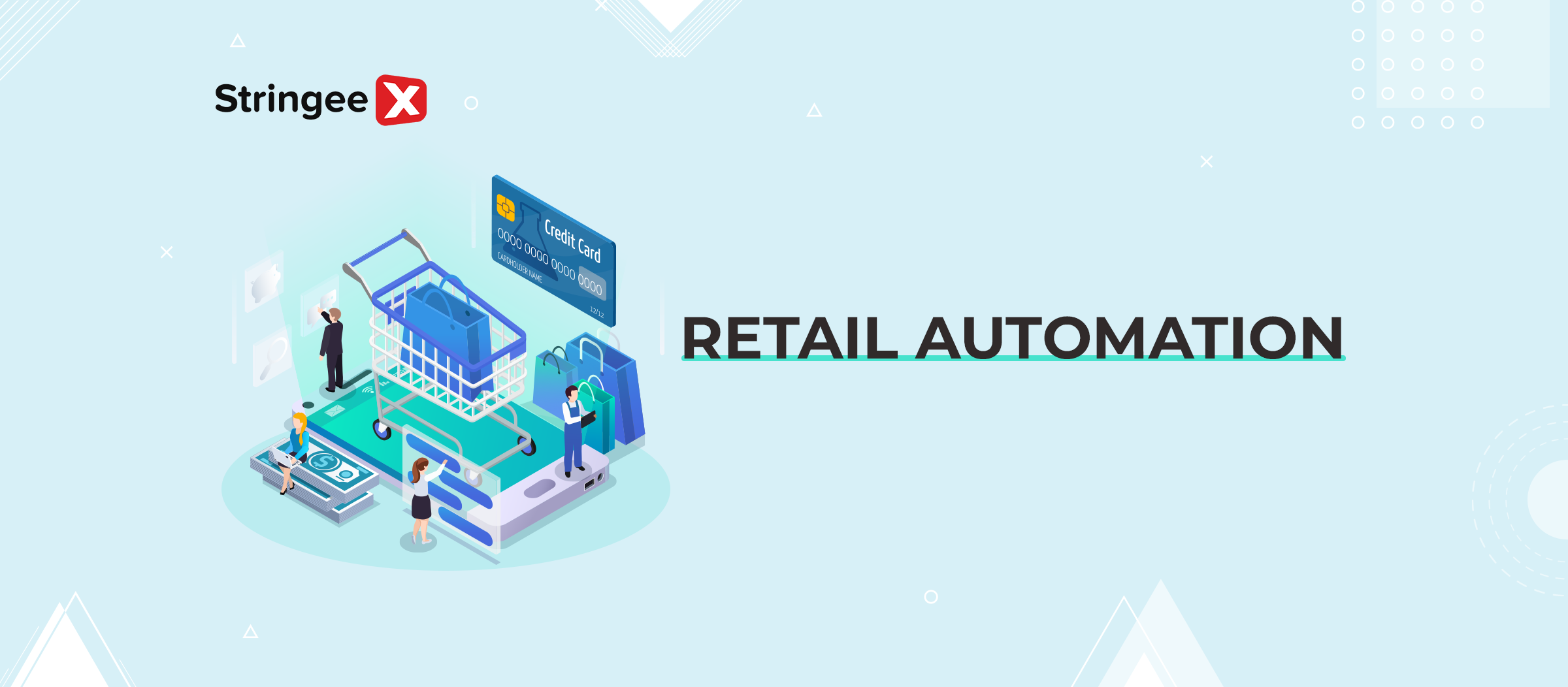Introduction
The rise of retail automation is transforming the shopping experience for consumers and the operations of businesses. From streamlining inventory management to enhancing customer experiences, retail automation holds the promise of revolutionising business operations.
In this article, we delve into retail automation, exploring its significance, benefits, and the trajectory it sets for the future of retail.
Types of Retail Automation
Automated Checkout Systems
These systems allow customers to scan and pay for their items without needing a traditional checkout counter operated by a human cashier.
Source: Itransition
For instance, in India, self-service kiosks at popular stores like Big Bazaar, Reliance Retail, and More Supermarket are shining examples of automated checkout systems in action.
Purchasers can scan the barcodes of their selected items, bag them, and complete the payment process using a touchscreen interface or mobile app. This eliminates the need to wait in long queues at the checkout counter.
The adoption of these automated checkout systems also allows retailers to redeploy staff from checkout duties to other value-added services, ultimately enhancing the competitiveness of their operations.
Inventory Management Systems
Major retailers like Reliance Retail, Future Group, and Tata-owned Croma have implemented advanced inventory management systems. These utilise technology to efficiently track and manage a store's inventory, including stock levels, product movement, and reordering processes.
One typical example is the use of barcode or RFID (Radio Frequency Identification) technology to track inventory in real time. As items move through the supply chain and onto store shelves, the RFID tags are automatically detected, providing real-time visibility into stock levels.
Additionally, many inventory management systems nationwide are integrated with point-of-sale (POS) systems and e-commerce platforms.
This integration enables seamless synchronisation of inventory data across multiple channels, allowing retailers to offer their clients omnichannel shopping experiences.
Robotic Warehouse Automation
Robotic warehouse automation is also considered a type of retail automation. These advanced systems leverage robotics and automation to streamline the logistics and fulfilment operations that support retail businesses.
Source: Linkedln
Leading e-commerce players like Amazon and Flipkart have been at the forefront of adopting robotic warehouse automation. Amazon's fulfilment centres in India, for instance, utilise autonomous mobile robots to transport shelves of products. These robotic systems work in tandem with human workers, improving the overall efficiency and speed of the order fulfilment process.
Similarly, Flipkart has invested heavily in robotic automation for its warehouses. The company uses robotic arms to automate the storage and retrieval of inventory, reducing the time and effort required for these tasks.
Personalised Marketing And Recommendation Engines
These technologies utilise data analysis and machine learning algorithms to deliver personalised product recommendations based on their preferences, behaviour, and past interactions. E-commerce platforms and online retailers widely employ these tools to enhance users' shopping experience.
For example, when a buyer visits an online store, recommendation engines analyse their browsing history, purchase patterns, and demographic information to suggest products that are likely to interest them.
These recommendations are often displayed prominently on the website or sent via email or push notifications, increasing the likelihood of conversion and driving sales.
AI-powered Customer Service Chatbots
AI-powered customer service chatbots are also considered a form of retail automation. These digital assistants use advanced natural language processing and machine learning to provide clients with quick and efficient support without human intervention.
Paytm, a leading digital payments and e-commerce company in India, has introduced an AI-powered chatbot called 'Paytm AI Assistant.' This chatbot can assist customers with various services, including bill payments, money transfers, and even troubleshooting issues related to their Paytm accounts.
The adoption of AI-powered chatbots in the Indian retail sector has proven to be a valuable tool for improving customer satisfaction and reducing the burden on human agents.
Benefits of Retail Automation
Increased Efficiency And Productivity
Retailers can streamline their workflows and allocate resources more effectively by automating repetitive and time-consuming tasks, such as inventory management, checkout processes, and customer service interactions.
To be more detailed, automated checkout systems, such as self-service kiosks and mobile apps, allow customers to complete their purchases quickly and conveniently, minimising wait times and reducing the need for staff assistance.
Moreover, AI-powered chatbots and recommendation engines enable retailers to provide personalised assistance to customers round-the-clock without the need for human intervention.
These chatbots can handle various inquiries, from product recommendations to order tracking, freeing human agents to focus on more complex tasks and providing higher-value assistance when needed.
Enhanced Accuracy In Inventory Management And Stock Replenishment
Advanced technologies like RFID (Radio Frequency Identification) and robotic warehouse systems play a crucial role. RFID technology, for instance, allows retailers to track the movement of individual products through the supply chain and within their stores.
Source: BBC
Each item is tagged with a small RFID chip that specialised readers can detect. This provides real-time visibility into stock levels and product locations, eliminating the need for manual counting and reducing the risk of human errors in inventory tracking.
Additionally, companies can leverage the data collected from these automated systems to gain deeper insights into their supply chain and inventory management. This information can then be used to fine-tune their forecasting models, streamline logistics, and make more informed product assortment and procurement decisions.
Improved Customer Experiences And Satisfaction
As we've discussed, self-service kiosks and cashier-less stores equipped with computer vision and RFID allow customers to complete their purchases quickly and conveniently without waiting in long lines at traditional checkout counters.
This streamlined checkout process can significantly enhance the shopping experience, as clients can save time and avoid frustration.
Furthermore, using AI-powered chatbots for user support can improve satisfaction. These digital assistants are available 24/7 to address routine inquiries and provide immediate assistance, ensuring your audiences can get the information they need without waiting for a human representative to become available. This can lead to higher levels of customer satisfaction and loyalty.
When retailers can accurately track and replenish their stock using RFID and robotic warehouse systems, customers are more likely to avoid out-of-stock situations or long wait times for product delivery. This, in turn, can foster a more positive and seamless shopping experience.
Cost Reduction
Automated tools have the potential to significantly reduce retailers' costs across various aspects of their operations. Retailers can realise cost savings in several key areas by automating repetitive tasks, optimising processes, and minimising manual intervention.
To be more precise, these systems can streamline tasks such as inventory management, checkout processes, and order fulfilment, allowing retailers to allocate resources more efficiently and reduce labour costs.
Furthermore, automated tools help retailers leverage data analytics and insights to make informed decisions and optimise their business processes. By analysing data on customer behaviour, sales trends, and operational performance, retailers can identify areas for improvement and implement targeted strategies to reduce costs and increase efficiency.
Challenges and Considerations
Initial Investment Costs and ROI Calculations
Implementing automated technologies can require significant upfront capital expenditure. Companies must carefully evaluate the long-term benefits and cost savings these solutions can provide to justify the initial investment.
One way businesses can potentially save on costs when implementing retail automation is by leveraging integrated software platforms that offer multiple functionalities. For example, platforms like StringeeX can provide contact centres with automation tools, such as AI-powered chatbots and virtual assistant integrations, all within a unified system.
By using an integrated platform, businesses can avoid investing in and maintaining separate systems for different automation tasks. This can lead to cost savings in licensing, implementation, and ongoing maintenance.
Data Privacy And Security Concerns
Retail automation technologies often involve collecting and storing customer data. Businesses must ensure that they have robust data privacy and security measures in place to protect this sensitive data from unauthorised access, breaches, and misuse.
Software platforms like StringeeX, which have been confirmed to meet the conditions for information security certification from CyStack Vietnam (penetration testing), can help address these data privacy and security concerns.
Source: Stringee
These platforms are designed with comprehensive security features and protocols to safeguard client data, such as encryption and access controls.
By leveraging software platforms with robust data privacy and security features, businesses can implement retail automation solutions with greater confidence, knowing they are protecting their customers' sensitive information and maintaining regulatory compliance.
Maintenance And Technical Support Requirements
Automated systems often require ongoing maintenance, software updates, and technical support to ensure their continued reliable operation. Businesses must allocate resources and expertise to keep these systems running smoothly, which can be a significant burden, especially for smaller or resource-constrained organisations.
However, businesses can feel at ease when using a cloud-based platform like StringeeX, where the service provider handles the infrastructure and maintenance responsibilities. Businesses do not have to invest in and maintain physical hardware, as the cloud delivers the platform. This eliminates the need for companies to allocate resources for hardware maintenance and upgrades.
Final Thought
In conclusion, retail automation offers immense potential to transform operations, enhance customer experiences, and drive business growth.
While considerations such as initial investment costs and maintenance requirements exist, integrated solutions like StringeeX mitigate these challenges, providing cost-effective and user-friendly automation capabilities.










